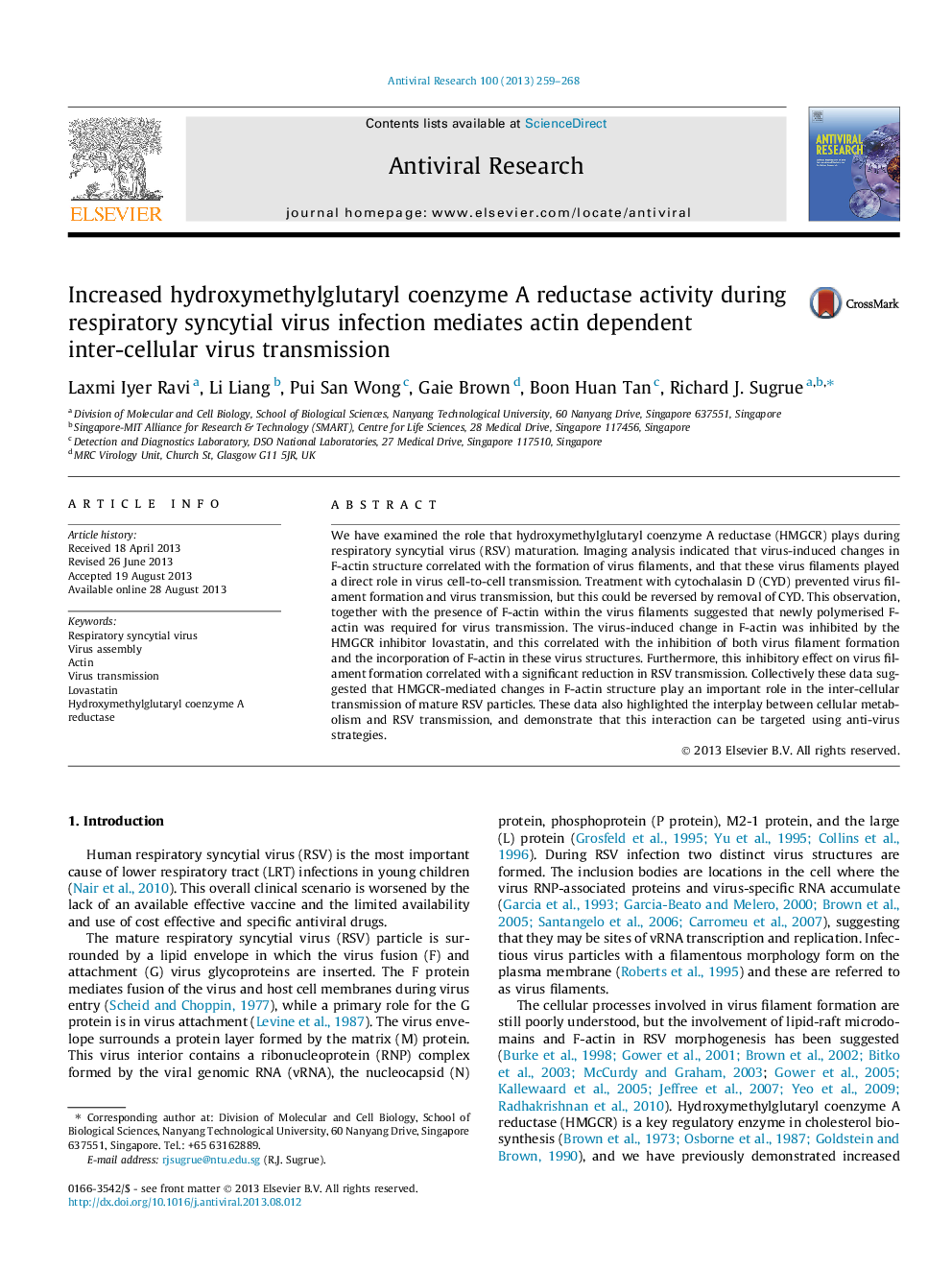| Article ID | Journal | Published Year | Pages | File Type |
|---|---|---|---|---|
| 5822452 | Antiviral Research | 2013 | 10 Pages |
Abstract
We have examined the role that hydroxymethylglutaryl coenzyme A reductase (HMGCR) plays during respiratory syncytial virus (RSV) maturation. Imaging analysis indicated that virus-induced changes in F-actin structure correlated with the formation of virus filaments, and that these virus filaments played a direct role in virus cell-to-cell transmission. Treatment with cytochalasin D (CYD) prevented virus filament formation and virus transmission, but this could be reversed by removal of CYD. This observation, together with the presence of F-actin within the virus filaments suggested that newly polymerised F-actin was required for virus transmission. The virus-induced change in F-actin was inhibited by the HMGCR inhibitor lovastatin, and this correlated with the inhibition of both virus filament formation and the incorporation of F-actin in these virus structures. Furthermore, this inhibitory effect on virus filament formation correlated with a significant reduction in RSV transmission. Collectively these data suggested that HMGCR-mediated changes in F-actin structure play an important role in the inter-cellular transmission of mature RSV particles. These data also highlighted the interplay between cellular metabolism and RSV transmission, and demonstrate that this interaction can be targeted using anti-virus strategies.
Keywords
Related Topics
Life Sciences
Immunology and Microbiology
Virology
Authors
Laxmi Iyer Ravi, Li Liang, Pui San Wong, Gaie Brown, Boon Huan Tan, Richard J. Sugrue,
